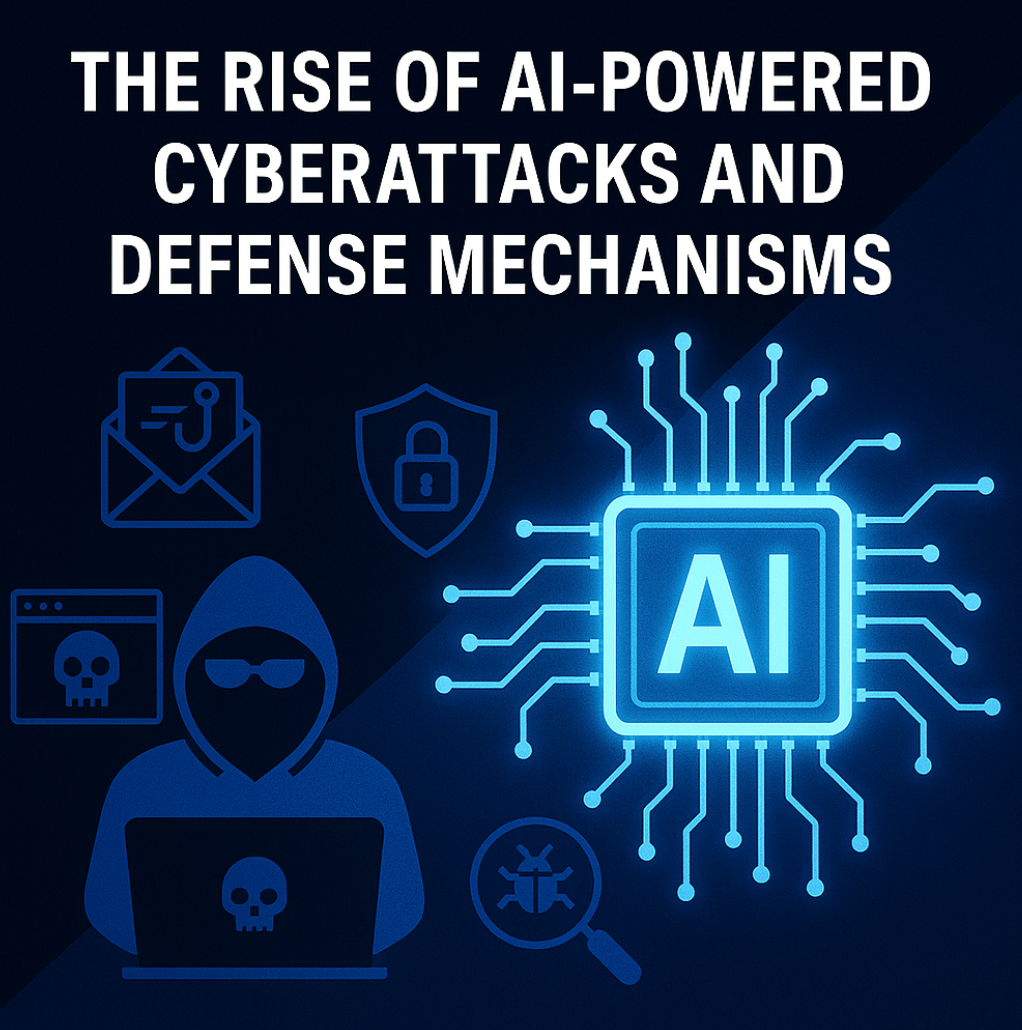The Rise of AI-Powered Cyberattacks and Modern Defense Strategies
Artificial Intelligence (AI) has completely changed the cybersecurity world. Today, AI isn’t just a tool for defenders — it’s also being used by attackers to launch smarter, faster, and more complex cyberattacks. As AI gets more advanced, both sides are using it to outsmart each other. In this article, I’ll break down how AI-driven cyberattacks are evolving and what kinds of defense systems are rising to stop them.
How Cybercriminals Are Using AI
Threat actors are now using AI to increase the success rate of their attacks. Here are some real-world examples of how they’re doing it:
1. Deepfake and Voice Cloning Frauds
AI tools can now create hyper-realistic fake videos and clone people’s voices. In one shocking case, scammers used AI to copy the voice of a business executive and tricked a company into wiring them $25 million.
2. AI-Written Phishing Emails
Forget the old, obvious phishing attempts full of typos. Today, attackers use AI to write emails that sound exactly like real business communications. These emails are so convincing they often pass through spam filters without raising any red flags.
3. Prompt Injection Attacks
Hackers are also exploiting weaknesses in AI language models by using something called prompt injection. This technique manipulates how AI models respond and can make them carry out harmful actions.
4. AI-Enhanced Malware
AI is helping malware become smarter. Malicious software can now adjust itself to avoid detection, find vulnerabilities faster, and spread more effectively across networks.
How Defenders Are Fighting Back with AI
Thankfully, the cybersecurity community isn’t standing still. Here are the main ways AI is helping defenders protect systems:
1. Real-Time Threat Detection
AI can quickly analyze huge amounts of data to spot unusual patterns or behaviors that might indicate a cyberattack. This means faster detection and response.
2. Automated Incident Response
With AI, some security tasks can be automated. For example, when a threat is detected, AI can isolate affected systems and even launch countermeasures immediately.
3. Predictive Analytics
AI tools can study past attacks and patterns to predict what types of threats might come next. This allows security teams to be proactive rather than reactive.
4. Behavioral Monitoring
AI systems now monitor how users behave on a network. If someone starts doing things they normally wouldn’t — like accessing unusual files or systems — the AI flags it as suspicious activity.
Real-World Example: Microsoft’s Security Copilot
Microsoft has developed an AI-powered security tool called Security Copilot. This system helps security analysts by giving them insights into attacks, summarizing what happened, and suggesting how to respond. Tools like this are becoming essential for modern security operations.
The Challenges We Still Face
While AI has strengthened defenses, it also brings some challenges:
- Bias and False Alarms: AI can sometimes make mistakes, like flagging harmless activity as a threat.
- Adversarial Attacks: Hackers are learning how to feed AI models misleading information to trick them.
- Privacy Concerns: AI needs lots of data to work well, and this can raise privacy issues.
Final Thoughts
AI is now a double-edged sword in cybersecurity. Attackers are using it to launch more advanced attacks, while defenders are using it to stay one step ahead. To succeed, companies need to invest in AI-based security, stay updated on new threats, and always be ready to adapt. Collaboration between businesses, researchers, and governments will be key to making sure AI becomes a force for good — not harm.




